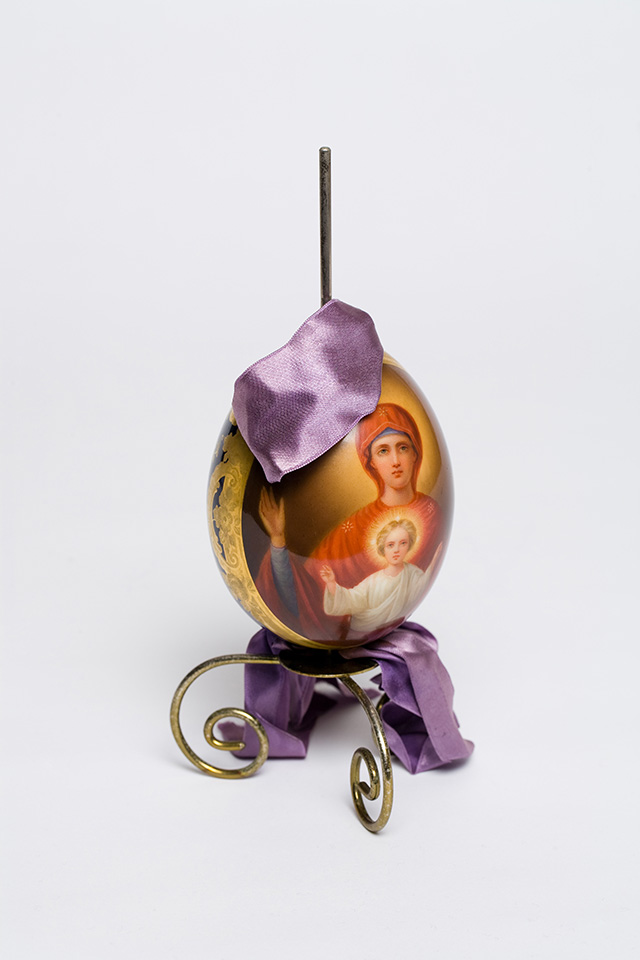Virgin and Child egg, 19th century

This 19th-century porcelain egg, decorated with an image of the Virgin and Child, carries the mark of the Imperial Porcelain Factory. Gordine and Hare built up a sizeable collection of Russian Easter eggs at Dorich House, including wooden, papier-mâché and porcelain examples. The practice of giving and receiving dyed red eggs at Easter dates back to the early days of the Russian Orthodox church and from the mid-19th century, people began decorating these eggs as gifts. The Russian Imperial tradition of giving porcelain eggs can be traced back to the time of Catherine the Great in the second half of the 18th century. Porcelain eggs evolved as works of art under Nicholas I in the first half of the 19th century and were not only given at Easter but also to mark important events in the life of the Imperial family such as birthdays or marriages. Various images and motifs were used to decorate them, including religious imagery, Russian landscapes, depictions of royal palaces, flowers and garlands.

